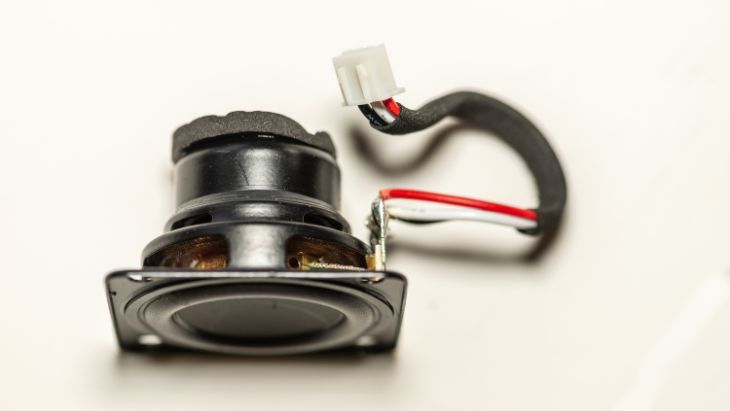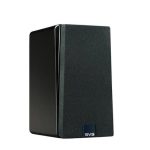How you wire speakers in your sound system largely determines the quality of the sound output. This is especially important when wiring more than one speaker. When wiring a single speaker, you simply connect the positive terminal of the speaker to the positive terminal of the amplifier. You’ll do the same for the negative terminal. However, wiring two or more speakers to an amplifier is a little tricky. In this case, you’ll need to wire the speakers either in series or in parallel.
Some people argue that wiring speakers in series deliver the best sound output while others swear that wiring speakers in parallel is the best option. Generally, the option you choose will have a certain effect on the power, load impedance, and sound output. In this article, we’ll explain series vs parallel speaker sound in detail, including the advantages and disadvantages of each speaker wiring option and the best speaker wiring option to choose between the two.
Wiring Speakers in Series

When connecting at least two speakers to an amplifier, you can wire them in series. One of the things you have to note when connecting speakers in series is that the total impedance should be equal to the amplifier’s output impedance.
For instance, if you’re using a 16-ohm amp, you can connect eight 2-ohm speakers, or four 4-ohm speakers, or two 8-ohm speakers in series. Similarly, if you’re using an 8-ohm amp, you can connect four 2-ohm speakers or two 4-ohm speakers in series.
To connect two or more speakers in series to an amp, you’ll need to connect the positive terminal of the amp to the positive terminal of the first speaker. Next, connect the negative terminal of the amp to the negative terminal of the last speaker in the setup. Next, connect the negative terminal of the first speaker to the positive terminal of the second speaker. Continue connecting the terminals of the remaining speakers the same way all the speakers are connected.
Wiring Speakers In Parallel

You can also wire more than two speakers in parallel to an amplifier. To calculate the total load impedance when connecting speakers in parallel, you’ll need to multiply loads of the speakers and divide the figure by the sum of the loads. For instance, if you want to connect four 4-ohm speakers in parallel, you’ll need an amplifier load of 16 ohms. On a similar note, if you want to connect two 4-ohm speakers, you’ll need an amplifier load of 2 ohms.
When wiring speakers in parallel, you’ll need several cables. To connect them in parallel, connect the positive terminal of the amp to the positive terminal of all the speakers. Also, connect the negative terminal of the amp to the negative terminal of all the speakers. As you connect more speakers in parallel, the resistance will drop. Thus, the current being drawn from the amplifier will increase.
Which Speakers Are Louder Between Series And Parallel?
Generally, speakers wired in parallel get the same voltage output from the amplifier. Also, they share the power output between them. Thus, they get the same volume level. On the other hand, speakers connected in series have lower volume and lower power due to the power and volume being divided between the speakers.
Thus, speakers connected in parallel are louder than speakers connected in series. The reason behind this fact is that when connecting speakers in series, the load impedance of the speaker increases. As a result, there’s increased resistance meaning that the current that can flow is reduced. Consequently, there’s reduced power output. On the other hand, connecting speakers in parallel reduce the load impedance of the speakers. As a result, there are reduced resistance and more current flow, thus increased power output.
Pros of Connecting Speakers in Series
- Easy to wire speakers
- Easy to add more speakers with limited channels
Cons of Connecting Speakers in Series
- Lower power and volume output
- If one speaker loses the connection, all other speakers won’t work
Pros of Connecting Speakers in Parallel
- Great sound quality
- The rest of the speakers will continue working if one of them loses the connection
- Offers more power and volume
Cons of Connecting Speakers in Parallel
- Often requires more amplifier channels
- Challenging to add more speakers as more ohms are required
The Bottom Line
When connecting speakers to an amplifier or stereo, keep in mind that you should connect them properly for the best sound output. You’ll need to connect them either in parallel or series depending on the impedance rating of the amplifier or stereo system and the speakers. Although speakers sound louder when connected in parallel, you’ll find it easier to add more speakers in series.
Michael Evanchuk is a San Francisco-based sound engineer with 20 years’ experience installing, troubleshooting, and repairing commercial, automotive, and household sound equipment. Evanchuk owns an auto stereo center, where he offers highly competitive car audio installation and repair services. He has written dozens of articles on different sound engineering topics, all of which have been published in leading journals, blogs, and websites.





